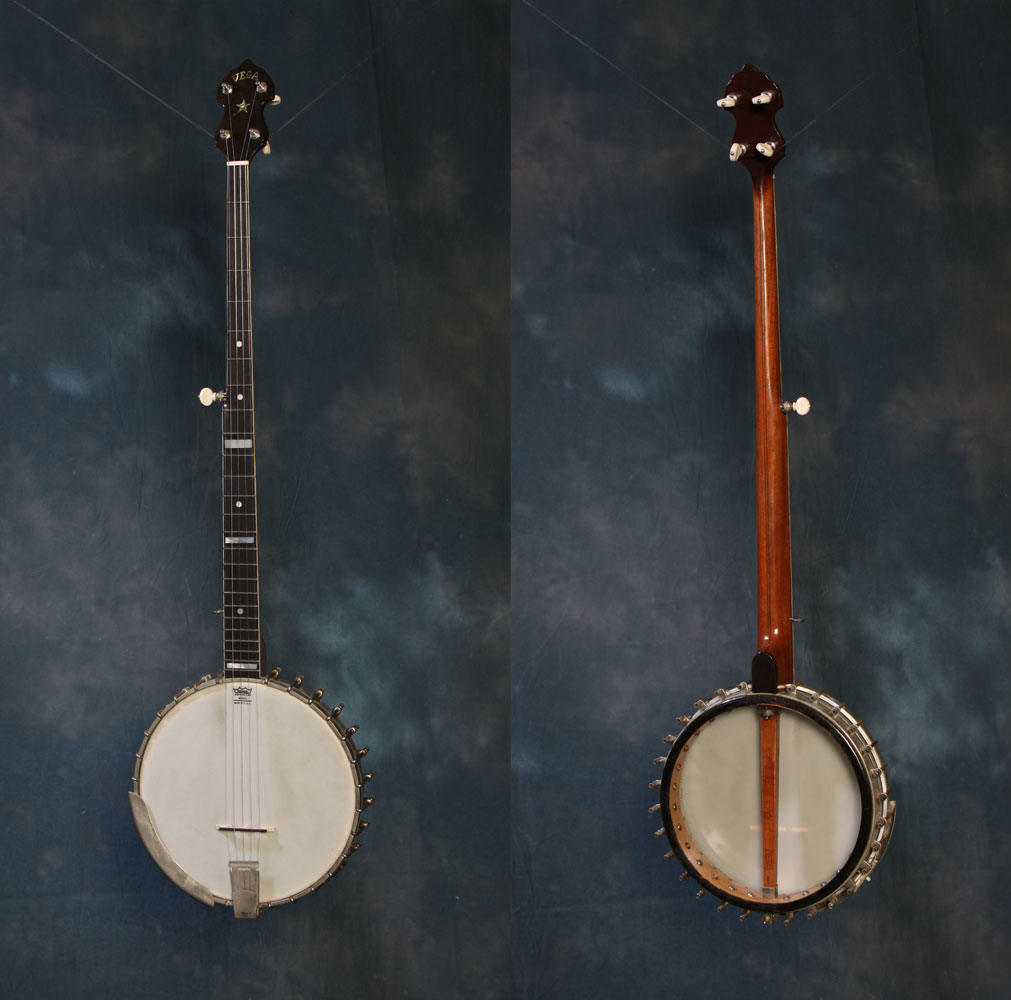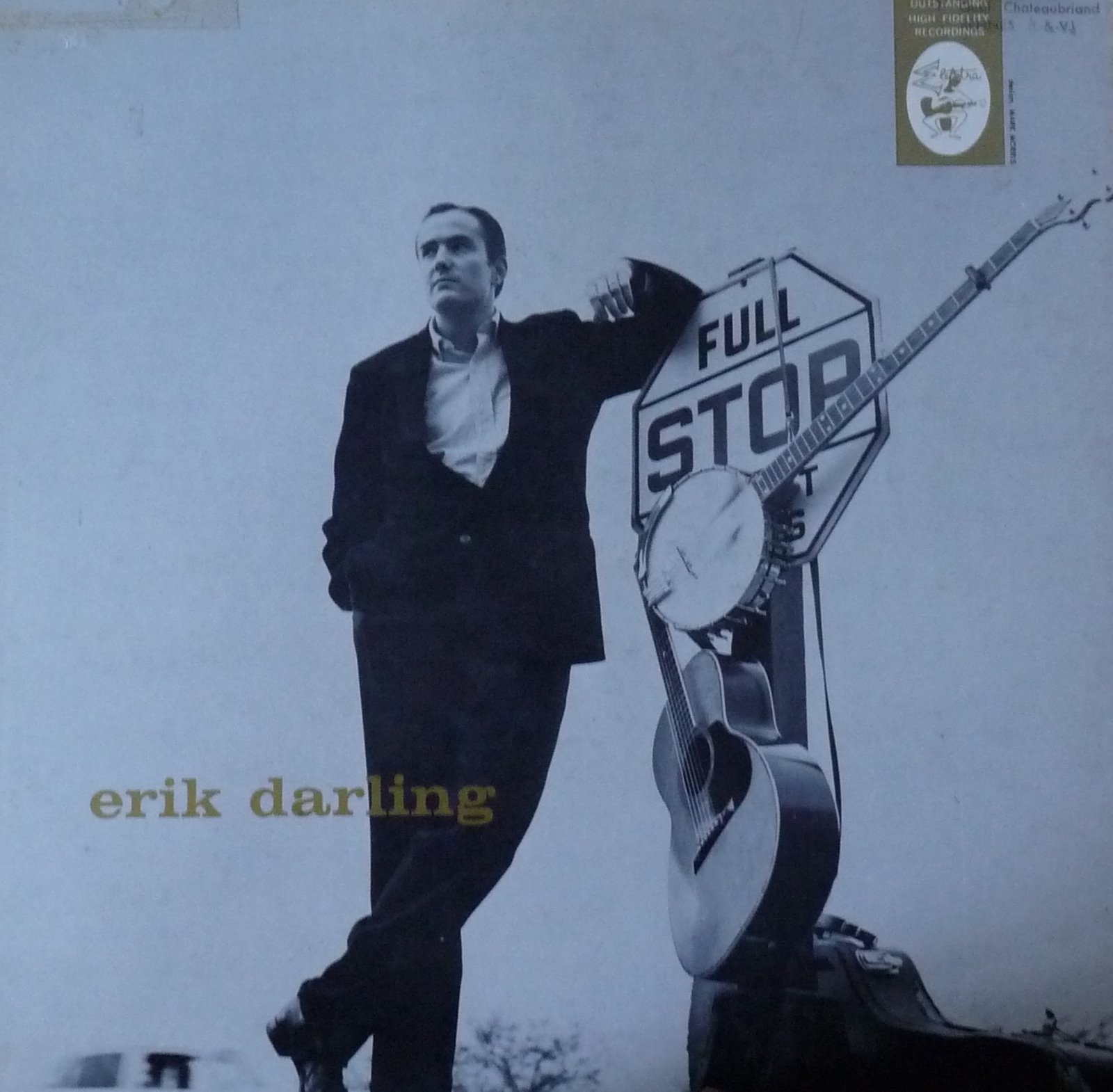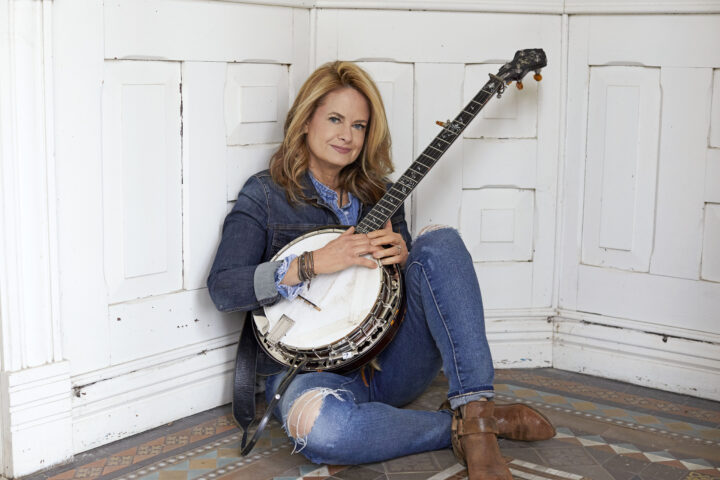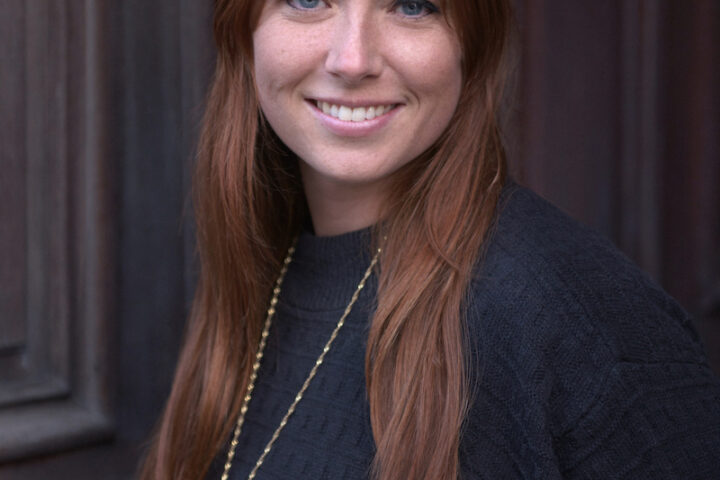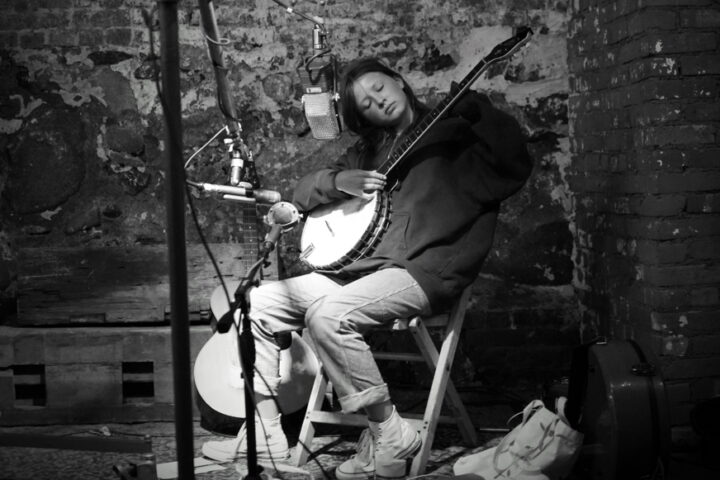Circa 1955 Vega Tu-ba-phone w/ Custom Neck
Every now and then an instrument comes along that is important musically, culturally and luthierly. (Luthierly is real word, isn’t it?) This Vega banjo is one such instrument. The banjo was sold sometime in the mid-1950s to Erik Darling, who was one of the pioneers of modern America folk music. Darling was a virtuoso banjo picker and guitarist whose work with The Folksay Trio, The Tarriers, The Weavers and The Rooftop Singers helped define the urban folk sound of the late 1950s and early 1960s. He was also an in demand studio musician who recorded a handful of highly regarded solo LPs.
Darling started playing banjo in the late 1940s after hearing some Pete Seeger records. In 1953, Darling, along with Roger Sprung and Bob Carey, formed the Folksay Trio, a one-shot group that recorded four songs for a folk music collection on Stinson Records. That record was not a big seller but the Folksay Trio’s syncopated, almost jazzy version of the old murder ballad “Tom Dooley” must have struck a chord with Dave Guard, Bob Shane and Nick Reynolds, who, as the Kingston Trio, took a very similar arrangement of the song to the top of the charts in 1958.
In 1956, Darling, Carey and an actor friend of theirs named Alan Arkin (yes, that Alan Arkin) formed another trio called the Tarriers. This time around the trio had more commercial success. 1957 they made it to the charts twice, with the song “Cindy, Oh Cindy,” where they backed Vince Martin, and “The Banana Boat Song,’ which was an even bigger hit for Harry Belafonte. It was sometime during this period that Darling bought this Vega banjo. When it was made around 1955 it had a standard five-string neck but Darling wanted a long-neck version like the one Pete Seeger played. Seeger was primarily a singer and he found that extending the neck brought the banjo’s pitch down into his singing range.
At the time, the only way to get a long-neck banjo was to have a builder make a new neck for an existing pot or, as what happened with banjo, to splice on the extra fret section. And, like Seeger did with his first long-neck banjo, Darling turned to the local luthier John D’Angelico to do the work. Darling played this banjo with the Tarriers in concert and on their first LP, which helped cement the long-neck as the banjo of choice for folk music. So, to review. This Vega banjo was one of the first ever long-neck banjos; it was modified by John D’Angelico, one of the finest luthiers of all time; and it was played by a pioneer of modern American folk music some of his most important records. To me, that makes the $5000 price Gruhn Guitars is asking for it seem kind of cheap.
